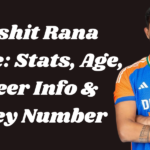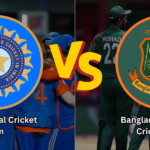Live cricket moves fast, but it does not have to feel chaotic. A clear view of pace, roles, and leverage overs turns noise into signals that any fan or analyst can use. Fantasy managers benefit most when core numbers stay stable on screen and context shows up at the right moments. The aim here is simple – explain how to read a match in motion and convert that clarity into better, calmer decisions.
Reliable coverage is part of the toolkit. A panel that displays score, wickets, balls, and required rate in fixed places helps draw attention when the crowd gets loud. For ball-by-ball context that time-stamps updates and marks tempo shifts cleanly, open this website alongside the broadcast. The layout helps confirm reads quickly – then attention can return to the next ball with confidence.
The scoreboard as a decision engine
A good scoreboard does more than count runs. It explains what each side can afford to do next. Runs and required rate set the mood for the chase. Wickets in hand define how brave batting can be without turning a turn into a collapse. Balls remaining lock the tempo and determine whether strike rotation or boundary hunting is the best approach.
Context belongs near those anchors. Who bowls the next over matters because matchups change the value of every length. Who has strike matters even more because ten balls in the hands of a set batter do not equal ten balls for a new arrival. A calm feed names bowler, arm, and line in short phrases – left-arm over, hard length, around the wicket – so a viewer can predict intent instead of reacting late.
Surfaces and weather – small inputs, big outcomes
Conditions write the sub-plot of every inning. Fresh lacquer under cloud can make the new ball nip just enough to force respect in the first spell. As the deck tires, cutters and cross-seam nibble, and the back-of-a-length begins to grip. When grip appears, across-the-line swings punish. When the skid arrives, hard length turns hittable, and straight hits survive misses.
Dew changes the script at night. Slower balls stop gripping, and fielding becomes harder in the deep. Chasing sides can plan to defend the required rate with grounded hits and hard running because the ball arrives quicker. Breeze bends angles and wakes wobble seam. These changes are not trivia – they are the reasons captains shift a ring, protect one rope, or switch a bowler for a single over to ride a five-minute window.
Roles and matchups – why names are not enough
Names sell tickets. Roles win sessions. Openers set early rhythm by locating easy singles and testing carry with one controlled loft. Middle-order anchors manage strike at the start of overs, cash loose balls, and target bowlers who lose length. Finishers enter with a pre-read of angles, a target over, and two scoring shots that survive a miss – one on the floor and one aerial.
Bowlers do similar work with angles. Left-arm over to a right-hander closes cover and tempts the glide to third, around the wicket changes where the splice flies and drags edges to different hands. Wrist-spin into the long boundary turns the middle into a trap instead of a truce. Watching the rope tells the truth about intent. A mid-on that refuses to come up to a set right-hander says the straight hit is live, but twos will be denied. Over time, these small choices protect margins that decide net run rate in tournaments.
Mid-innings checklist – simple reads that travel
- Name the surface in one word – true, skiddy, or holding – and judge shots and lengths around that call.
- Track strike for the next 10–12 balls because that is the real matchup.
- Watch length drift as balls age – fuller skids under lights, back-of-a-length grips late.
- Spot leverage at powerplay exits, fresh-ball spells, and the first death over.
- Confirm pace windows with the last-five-over rate rather than the full-innings average.
A single list like this, checked at over breaks, keeps thinking one ball ahead.
Reading a chase without chasing panic
Chases look tense when eyes wander. Keep four anchors fixed, and decisions simplify. If the required rate rises because of dot balls stacking, boundaries cannot arrive from hope. Batters need a plan that buys the next over – steal twos, force misfields, and take one calculated option that clears a rope without hacking across the line. When the required rate falls, protect strike, pocket singles, and avoid the loose shot that opens a door.
Bowling plans that win chases often sound dull and feel ruthless. Hard length into the hip with a packed leg-side ring turns singles into scrambles and twos into risk. A well-sold slower ball, delivered after two quick ones, makes even set batters swing early. Captains who manage rope depth by batter rather than by habit deny twos without gifting fours. These patterns do not trend on social timelines. They win nights quietly.
Graphics, microcopy, and trust – the screen that helps, not hypes
Design choices shape behavior. Fixed anchors build muscle memory. Honest time stamps stop arguments about staleness. Reason tags – dew rising, grip back, new ball on – convert swings into evidence. En dashes add breath to captions, so updates read like a calm voice rather than a siren. Motion should mark change, not celebrate it – a one-second fade on a refreshed number is enough.
Language access matters in cricket’s multilingual audience. Short regional lines that state conditions plainly lift understanding faster than long hype in any language. When why becomes clear in words that fit the crowd, debate shifts from blame to plan. Viewers start talking about states – skiddy now, breeze left to right, strike locked – and analysis improves without turning into jargon.
Final over in the head – keeping calm when everything speeds up
End-game clarity comes from the same habits used early. Keep anchors steady. Tie the context to those anchors with short cues. Respect conditions as live inputs, not excuses. Let roles, not names, decide who takes which risk. Use a live panel that pins core numbers and explains changes in plain English so attention returns to the bowler’s hand and the batter’s setup. Under that rhythm, even a frantic finish reads like a plan rather than a blur. The match still swings. The thinking stays steady. And a night ends with decisions that make sense when the lights switch off – pressure, yes, but guided by a map instead of guesswork.



